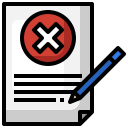Plagiarism | Plagiarism Checkers | Paraphrasing Techniques | Scholarly Paraphraser
In this blog, we will discuss plagiarism in detail, its consequences, and techniques to avoid it. We will also look at different types of plagiarism using practical examples.
1. What is considered plagiarism?

Plagiarism occurs when you use someone else’s work without acknowledging the original author. Plagiarism is regarded as stealing and often leads to serious consequences and harsh punishment. This is usually found in several areas, especially academic writing, where concepts and statements are derived from an origin without proper citing.
2. What are the consequences of plagiarism?

Damage to student image: Schools usually include the ethics of their students in their academic records. Students who are found guilty of plagiarism are usually suspended or expelled from the schools, thereby causing the student not to be able to get into another school.
Damage to professional image: A lot of people, including journalists, freelancers, and writing professionals, are usually impacted by the effect of plagiarism all their life. This has led many professionals to lose their jobs or get retrenched at their workplaces. Furthermore, this dent tends to go with them throughout their career, making it difficult to secure another job.
3. Why do students plagiarize?
Following are some reasons why students plagiarize or cheat:

4. What are the different types of plagiarism?
| Direct or Complete plagiarism | This is commonly regarded as the most serious form of plagiarism. It occurs when you copy and paste the entirety of someone else’s writing and pass it off as your own. |
| Accidental Plagiarism | This Plagiarism occurs unintentionally. It usually involves a lack of proper citations or incorrect citations, forgetting or failing to quote, or accidentally using the same phrases or similar word combinations as given in the original text. |
| Self-plagiarism | Self-plagiarism occurs when a writer decides to reuse a piece of text from his or her previously published paper without rewording or rephrasing the text. |
5. What are some common examples of plagiarism?
6. A practical example of plagiarism in a paper
Let’s look at some examples of Plagiarism.
More than 70% of papers rejected by scientific journals are written by non-native English speakers.
Source text: Statement from paper by Elan et al. (2017)
This piece of text shown above is from a paper written by ‘Smith et al’. Now, the authors have used this statement in their paper as shown below. They have done the right thing by citing the source at the end of the statement. The mistake here is that since they have used the exact text from the paper, they must enclose them in quotes. This will be considered plagiarism.
More than 70% of papers rejected by scientific journals are written by non-native English speakers. (Elan et al., 2017)
Incorrect: Unaltered text not it quotes and hence it will be considered plagiarism
So the correct way to do this will be to put the text in quotation marks and then reference the paper.
As Smith et al. (2017) state: “More than 70% of papers rejected by scientific journals are written by non-native English speakers”.
Correct: Proper way to quote the paper
It is generally not advisable to use a lot of unaltered text from other papers and put them in quotes in your paper. You should only use the exact text from someone’s work if you think it is important to be precise. This can include things like a philosopher’s statement or definition of something. Most referees and supervisors expect you to understand the work and then write them in your own words. In the example below the authors have paraphrased the text and then cited the paper, this is how it should be done.
Manuscripts authored by non-native English speakers are rejected by scientific publications 70% of the time. (Smith et al., 2017)
Correct: Text paraphrased and source cited (the recommended way)
7. What is self-plagiarism?
Self plagiarism occurs when you use a piece of text from your own published work in a new paper that you are writing. You might ask, what is the problem? It is my work and why can’t I use it again in a different paper? The problem is that once you publish your work, the copyright for the text belongs to the publisher, you cannot use the unaltered text from your old paper in your new paper. You have to paraphrase your text if you want to use the same content in your new paper.

Self-plagiarism even applies to figures, if you want to reuse a figure from your old paper in your new paper exactly as it is, you have to get permission from the publisher of your old paper. If the publisher does not give you permission, then you should modify it.
8. Simulateneous submission to multiple journals
Another serious type of self-plagiarism is submitting exactly the same paper to multiple journals. You cannot do this. When you submit your paper to a journal you will be signing an agreement that clearly states that “the work in question has not been published before and is not under submission at any other journal”. If you submit the same manuscript to multiple journals, then, it is a violation of the ethical standards of publishing. You must submit your paper to a journal first and wait for the outcome. If the paper gets rejected, then submit your paper to another journal. Keep repeating the process until you get your work published.

9. How do you avoid plagiarism?
There are numerous ways to avoid plagiarism in your academic and professional work. Below are the top hints to avoid plagiarism:


